To ease Penn Station woes, a new plan calls for a transit hub in Sunnyside, Queens
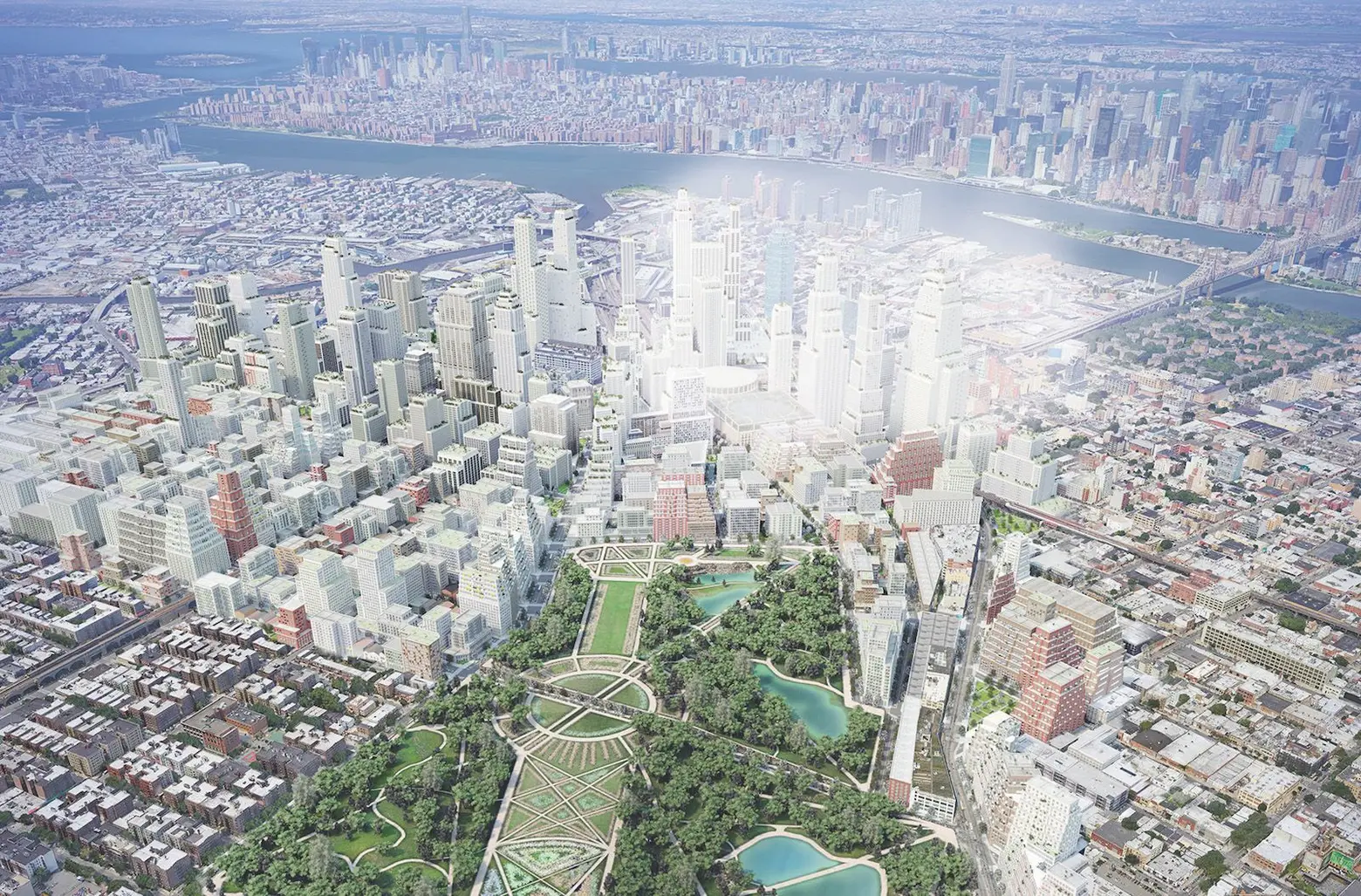
Via ReThink Studio
With its constant delays and malfunctions, Penn Station is becoming a worse and worse nightmare for countless commuters and visitors. Last year, Governor Cuomo revealed a plan to redevelop the train hub, one of the busiest in the country, by building a new train hall with restaurants and shops, but while the artful renovation will make Penn Station more attractive, it will do little to address the passenger congestion problem, according to think tank, ReThink Studio (h/t Crain’s). In response, the group came up with an idea called ReThinkNYC that would create a new transit hub in Sunnyside, Queens, to connect commuter lines with the subway system. Instead of making Penn Station the final stop for NJ Transit and LIRR commuters, trains would pass through instead of stopping and turning around.
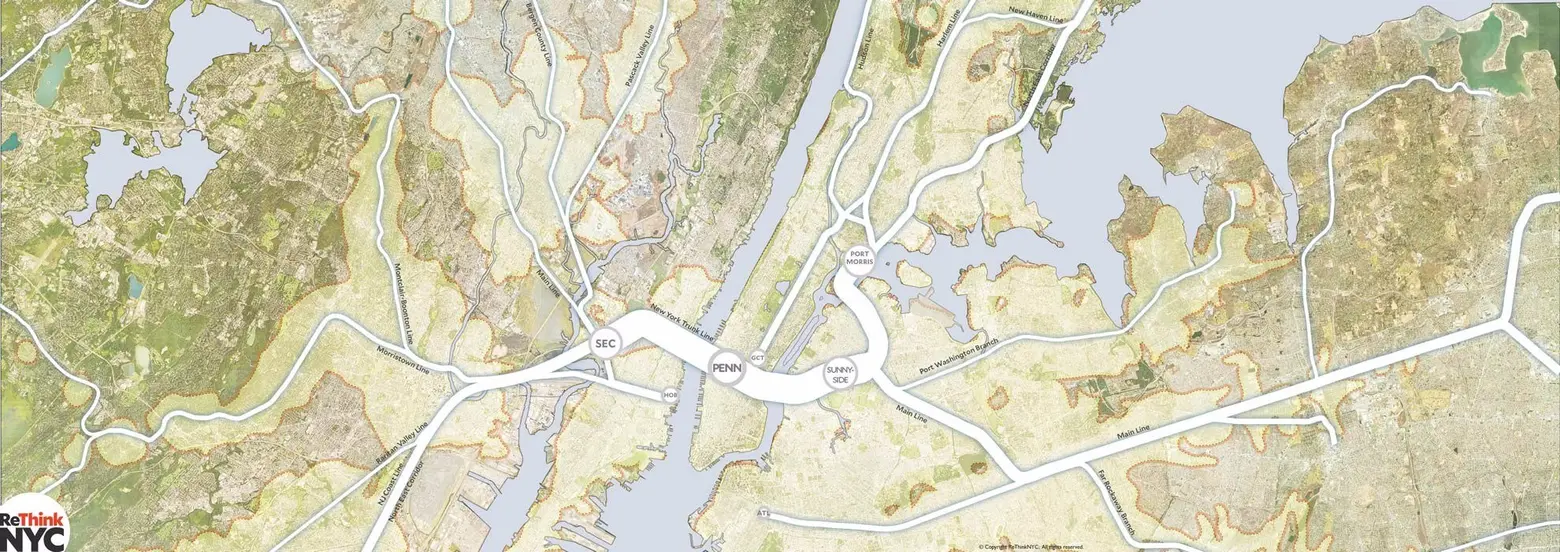
The ReThinkNYC plan hopes to expand the city’s “car-optional” region beyond Manhattan by rearranging transportation systems into a single functioning network that serves passengers in the greater NYC area. This would allow riders to transfer easily between commuter rail, subway, bus or light rail systems, as detailed by the group’s website. The plan calls for moving rail yards in Sunnyside to the Bronx, which the think tank says would cost way less than Mayor de Blasio’s plan to build a deck over Sunnyside Yards.
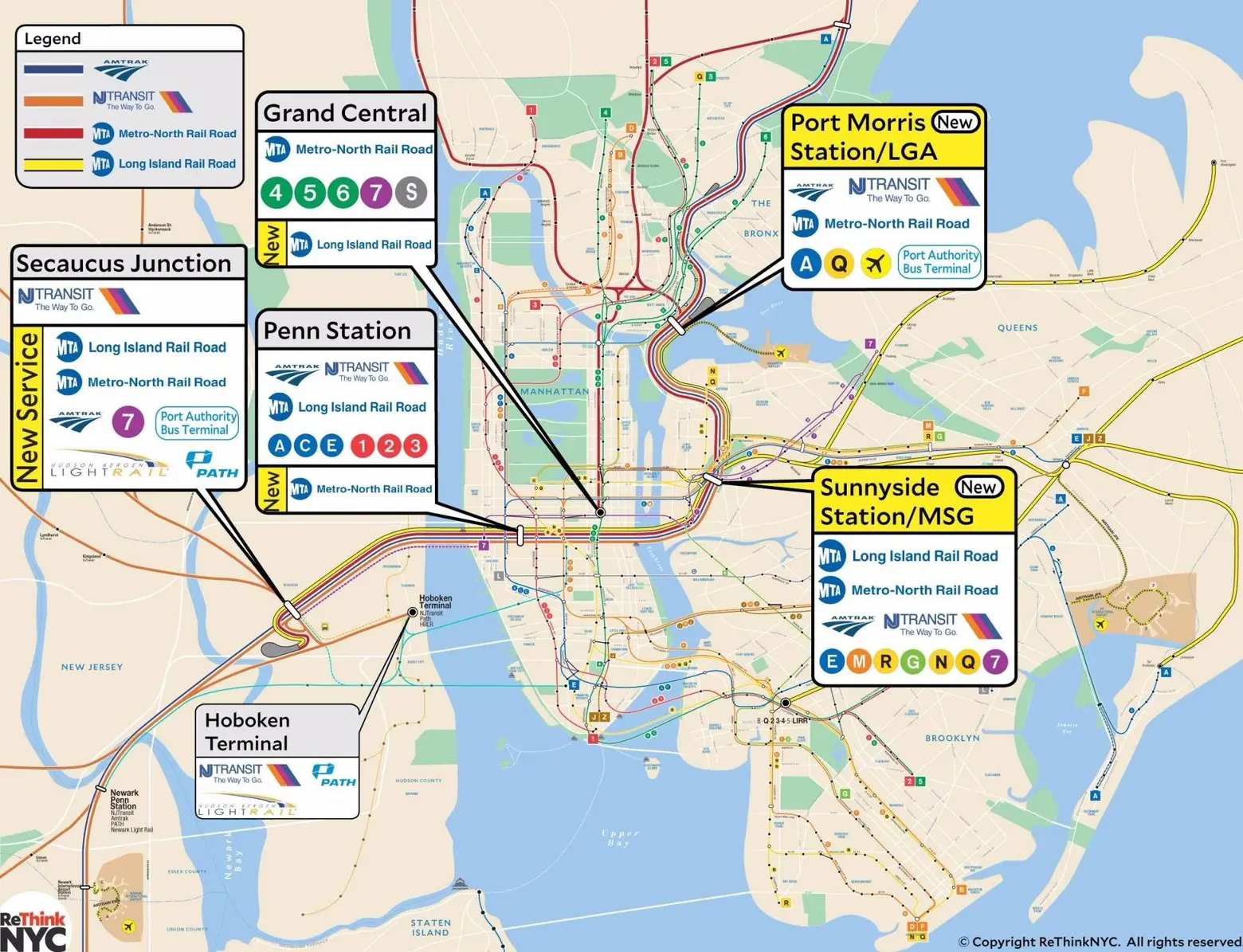
ReThinkNYC’s Trunk Line proposal for unified transit service via ReThink Studio
One part of ReThink’s plan is a “Trunk Line” that would create “overlapping intermodal connectivity” between Secaucus, NJ and Port Morris in the Bronx, which could unify the major four land masses that make up the NYC Metro Area. This plan hopes to connect the region’s 26 commuter rail lines, including Metro-North’s Harlem and Hudson Lines, as well as Hudson Lines and NJ Transit’s Bergen County Lines. Secaucus, Penn Station, Sunnyside and Port Morris would then become the major transit hubs with better accessibility to local and regional transportation.
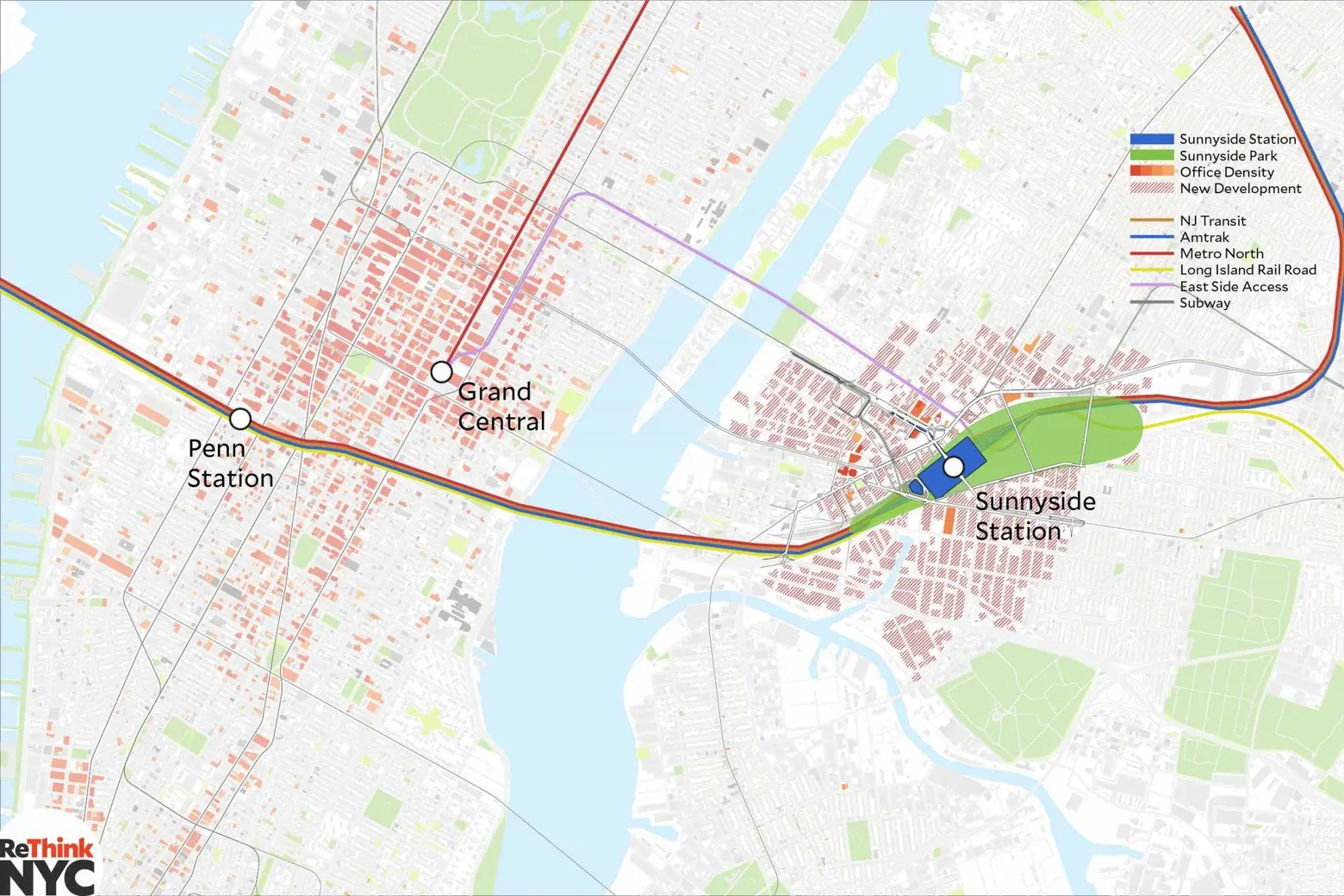
According to ReThink Studio, through expanded transportation, western Queens can become an extension of Midtown
As part of their proposal, ReThink Studio hopes to create the next Midtown East in Queens by creating a new office district in Sunnyside that would be directly connected to the Trunk Line. According to the group, the plan would provide millions of square feet of new office space that would be connected to the entire regional rail network, seven different subway lines, and the new light rail/bus network for Brooklyn and Queens.
Currently, Amtrak, NJ Transit and the LIRR pass through Sunnyside but do not stop there. According to ReThink Studio, adding the station stop, along with the Bronx and NJ stops, could be done in concurrence with the Gateway tunnel project, without raising its $25 billion total cost.
[Via Crain’s]
RELATED:
Get Insider Updates with Our Newsletter!
Leave a reply
Your email address will not be published.
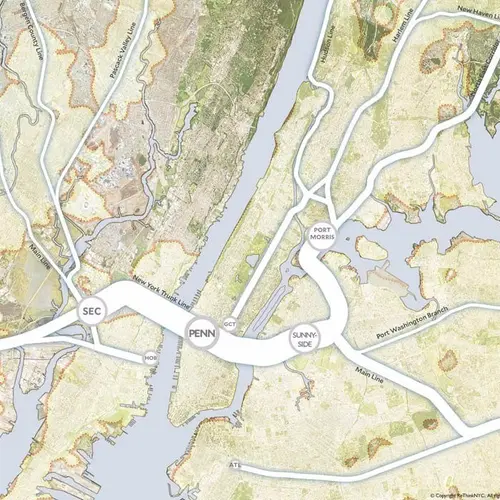
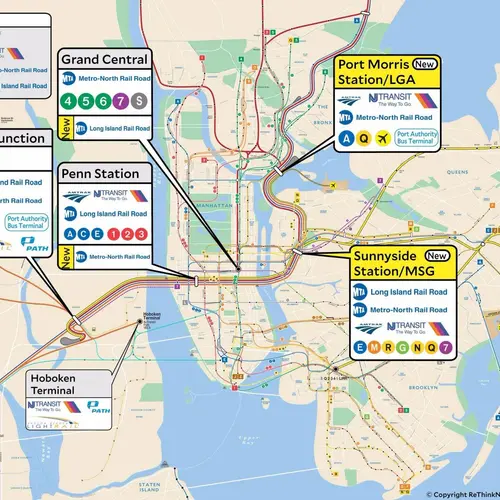
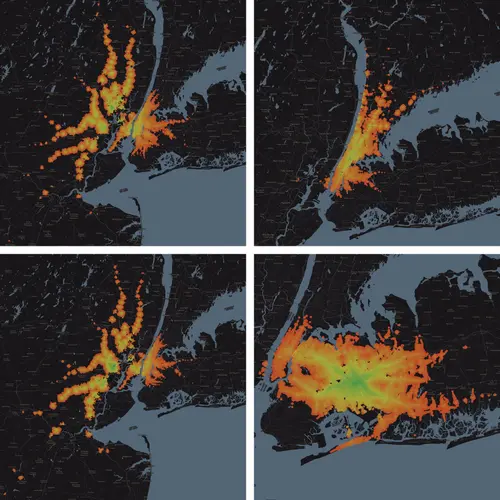
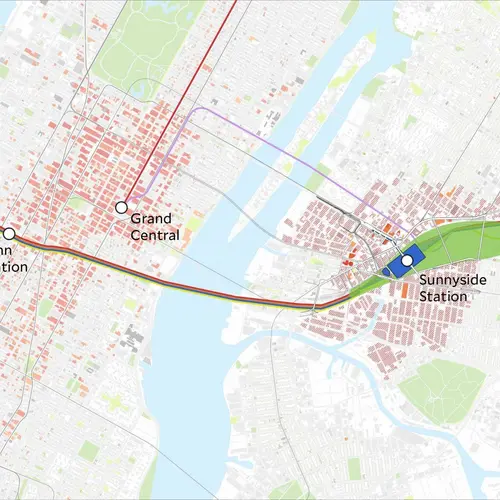
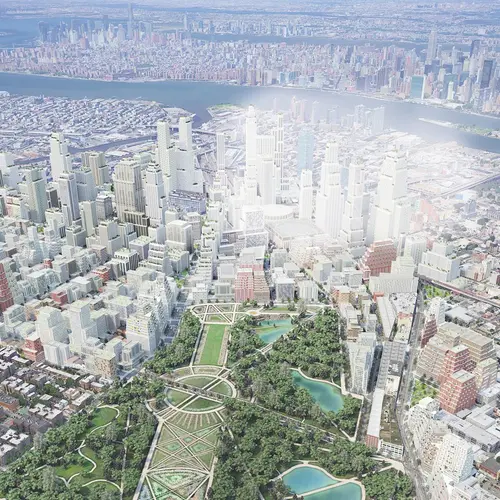
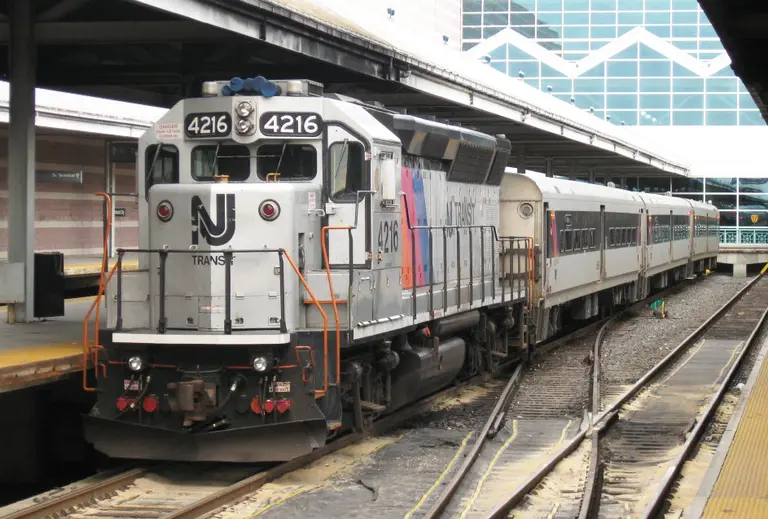
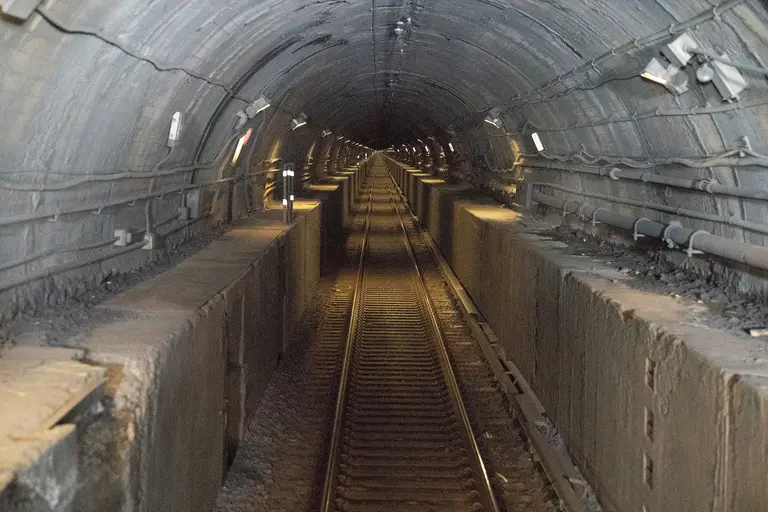
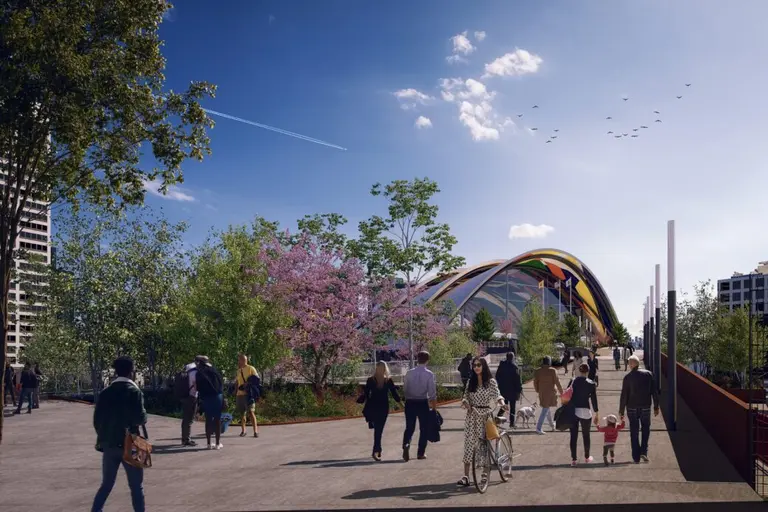
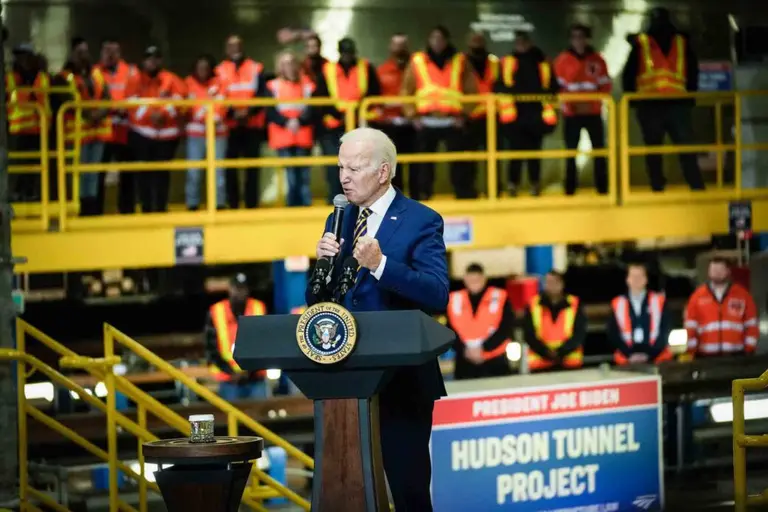

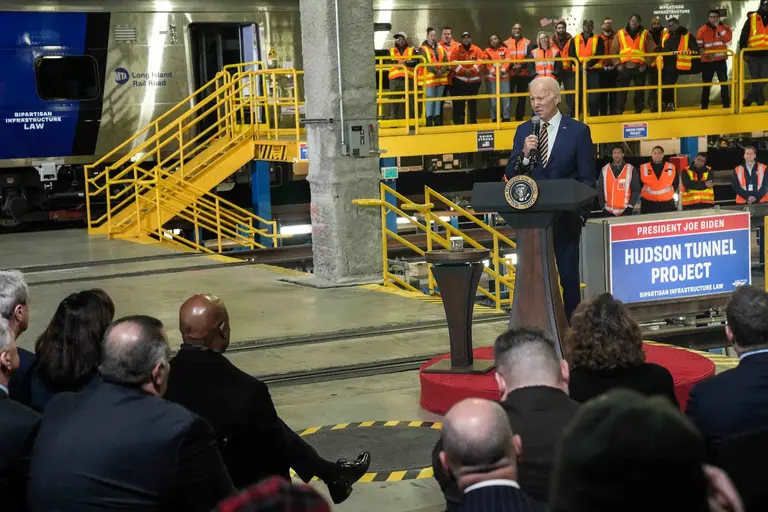





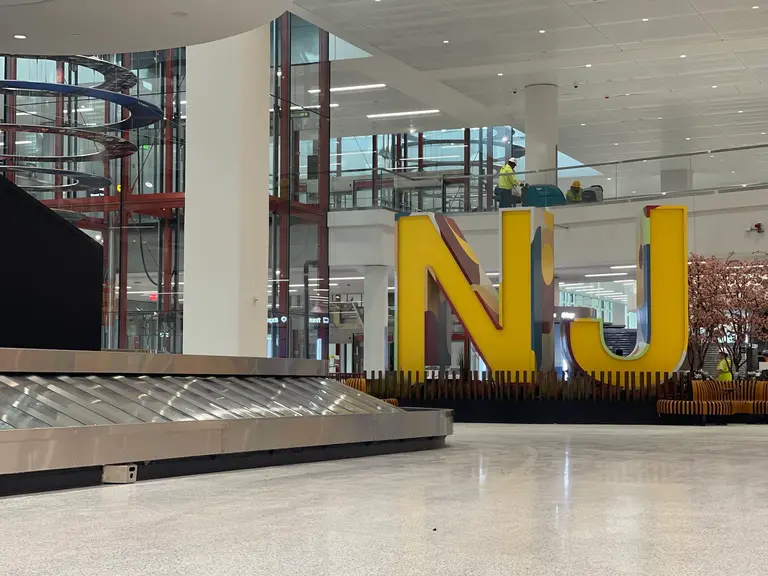
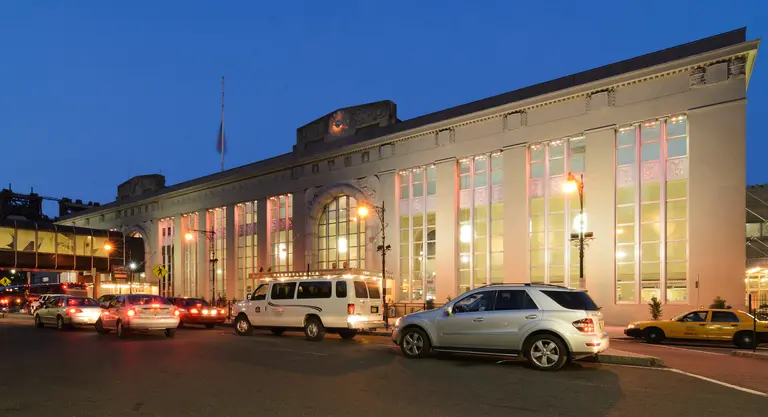
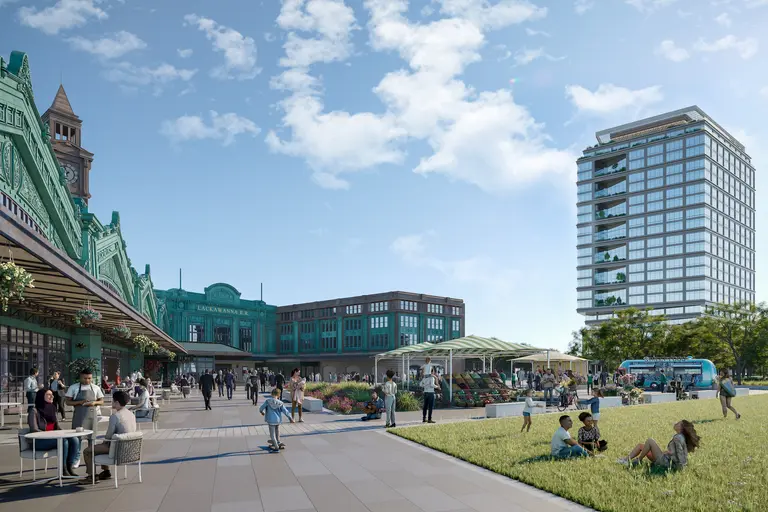

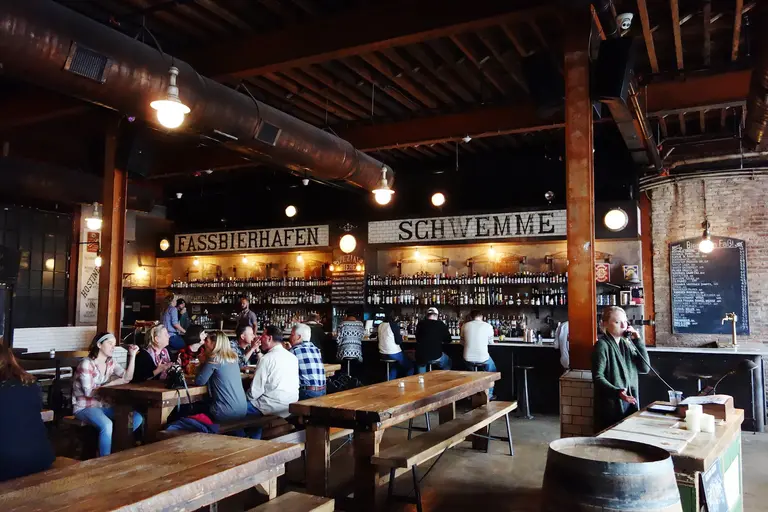











This will not help. There are only so many pipes under the East River. Unless you dig more tunnels this will not solve the congestion issue. Solution? Keep AMTRAK OFF OF ‘Long Island’ and keep them on the other side where they belong and can screw up all they want. Why are NJT Trains housed on this side too? Isn’t there enough room in Jersey??
Was Chris Christie ever charged with the diversion of funds earmarked for the ARC (Access to the Region’s Core and using it for some NJ Highway so that he could temporarily avoid a gas tax increase prior to his reelection. The buffoon joked about running trains into Macy*s basement and was against the project for that made up reason. He should be behind bars. Also, build the new bus terminal in New Jersey and build a rail rapid transit line terminating on the sight of the hideous bus terminal and an office building on the land that it now occupies. The NJ buses idle outside of my building in the pm waiting for space in the bus terminal. It is hideous and they should be gone.
Absolutely brilliant proposal! Hopefully one day there’ll be a real Metropolitan Transportation Authority which covers the 3 state comprising the NYC region. The new MTA would run all the railroads (say goodbye to Metro North, LIRR and NJ Transit), the NYC subway and bus systems, PATH and the remainder of the disparate regional transportation systems. This is how it is set up in all the great cities of the world and it’s how it should be set up here. It will be a huge challenge to develop this regional authority but it is the only way provides the framework for a connected regional transportation network that will be a huge engine for economic growth, alleviate traffic congestion, and reduce carbon emissions.
One regional system is a must; the first step to breakdown the antiquated, parochial political lines that compete for funds. But this also requires a reformed Port Authority that can credibly represent the region and rationally prioritize projects and funding.
To understand what happened to Penn Station first requires acknowledgement that all parties involved share the blame. Historically, Amtrak was established to offload the passenger operational costs from the freight railroads, which in 1970, were looking over the precipice at possible nationalization due to the fiasco of the Penn Central merger, and within two years, bankruptcy. Congress never viewed Amtrak as a transportation mode equal to access its own taxes in a dedicated trust fund as provided air and highway. Congress failed to structure an annual funding mechanism to allow Amtrak to properly plan, acquire equipment on lease, instead of purchasing; importantly, to designate routes according to market need; not congressional pressure.
With such a political vacuum, Congress and succeeding administrations acquiesced to the political power grab of Amtrak by the Northeastern congressional delegation. This ensured a Board of Directors for Amtrak predominantly from the Northeast who required Amtrak to serve as a convenient safety net for depositing political, non-railroad experienced CEOs, who lacked the credibility to develop a vision of credible leadership and fiscal prowess. The Northeastern congressional delegation also secured the Northeast Corridor for Amtrak from the USDOT in 1976, but without providing for the vast sums of funding required to repair and maintain the Corridor after decades of deferred neglect.
Before Amtrak, the New Haven Railroad operated hourly Boston-New York trains to Grand Central (and some thru runs from Hartford); its four thru trains between Boston-Washington ran over Hell Gate Bridge to Penn Station. When Penn Station was demolished in 1963 to appease connected developers, intercity trains were on their death throes in the East; commuter lines had not been yet re-organized into viable regional services. Nobody at that time had the vision to project the immense increase over the decades in commuter traffic, as well as more Amtrak services into NYC from Boston, Albany, Harrisburg, Washington, and Virginia.
Amtrak has been devoid of competent, experienced leadership since 2005, when the politicized Amtrak Board undercut a very strong railroad professional, Mr. David Gunn. Prior to Mr. Gunn’s arrival, Amtrak was horribly misled into an expensive decision to build new Acela train sets, rather than purchasing proven off the shelf equipment for far less, and better performance metrics. Mr. Wick Moorman, who was highly regarded as the former CEO of Norfolk Southern, assumed the Amtrak CEO slot only last October (2016), inheriting the obvious mis-management and financial issues parlayed over the past eleven years and ignored by a Board focused exclusively on the Northeast Corridor; but without the requisite hands-on knowledge to appreciate the dire situation to timely communicate to Congress, FRA, and USDOT.
At this point, Mr. Moorman did not create the long, drawn-out issues of neglecting Penn Station. But with his proven background in projects and track infrastructure, he will certainly fix the problem. What we cannot allow to happen is the typical political dodge game. We need to understand the details of how the governors of NJ and NY, along with their Port Authority, did not view Penn Station as their issue; no different than the tunnels and bridges leading into and out of NYC. Also, what is the history of Amtrak management responsible for Penn Station to have timely and properly identified the gravity of the issues–to their Executive C-Suite level and the Board of Directors? If their was a dereliction of their duty, where are they now; what is their future at Amtrak?
Secaucus is not set up for this kind of service. No real way to turn any significant number of trains there.